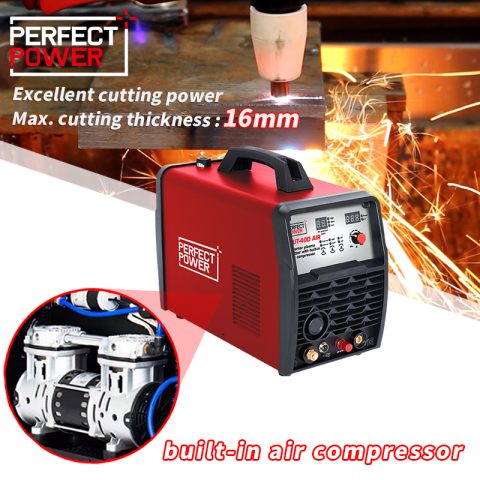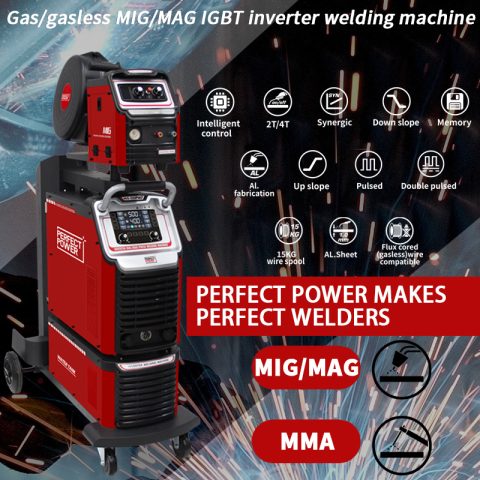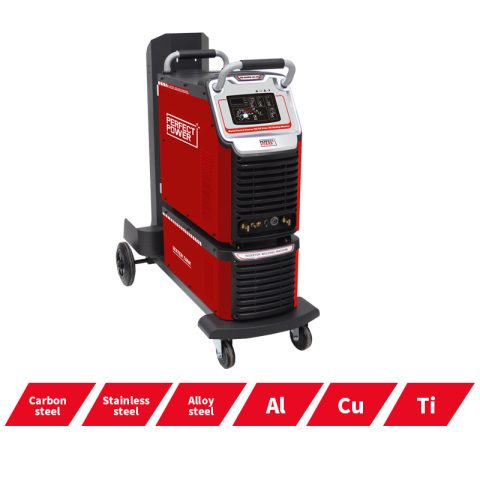Plasma cutting machines are so easy to use that it’s tempting to take your new plasma cutting machine out of the box and go to work. However, there are a few practices that can increase your efficiency, improve your cut quality and prolong the life of your equipment.
Whether your plasma cutting machine will be used in the shop or for DIY projects, arts or motorsports, using proper techniques will deliver better results.
Learn more about choosing the right equipment as well as plasma cutting machine setup and operation.
Plasma cutting basics
Plasma provides good quality cutting, gouging and piercing at very high speeds — making this process a good fit for many industries and applications.
The process of plasma arc cutting constricts an open arc by passing it through a small nozzle from the electrode to the workpiece. Although the technology may seem complicated, the process itself is very easy to learn and perform.
The plasma process can be used on any type of electricity-conducting metal and a variety of material sizes — cutting anything from thin-gauge aluminum to stainless and carbon steel up to several inches, depending upon the power of the cutting machine.
The process also provides many benefits compared to oxy-fuel cutting. Plasma cuts faster, a pre-heat cycle is not required, the width of the cut produced is smaller and there is a smaller heat-affected zone, which prevents the surrounding areas from warping.
Keeping a few tips and best practices in mind when choosing and using a plasma cutting machine can help you improve results.
Tip 1: Choose the right plasma cutting machine
Some of the key factors to keep in mind when selecting a plasma cutting machine are output power, cutting speed, input power, duty cycle, and weight and size. Think about the jobs you will do most often when selecting your machine.
- Output power: The necessary output power depends primarily on the thickness and type of material to be cut. Power Welds uses two standards: rated and sever cuts. A rated cut is the thickness of mild metal that an operator can manually cut at a rate of 15 inches per minute (IPM). A sever cut is the maximum thickness a plasma cutting machine can handle. The travel speed is slower, and the cut may require clean up.
- Cutting speed: This is usually noted as inches per minute (IPM). A machine that cuts 1/2-inch material may take five minutes to do so, whereas another machine may take one. Cutting speed makes a significant difference in production time.
- Input power: Will you always be using the plasma cutting machine in the same location, or do you need portability and the ability to use a variety of power sources? Look for plasma cutting machines that offer a range of power options. Some have the ability to switch from 110 volt to 220-volt power.
- Duty cycle: Duty cycle is the amount of time a machine can cut within a 10-minute cycle without overheating. If a machine’s duty cycle is 60%, the machine can run continuously for six out of every 10 minutes and then needs to cool for the remaining four minutes. A larger duty cycle is important when making long cuts, in high productivity applications or when using the machine in a hot environment.
- Weight and size: If you need portability, many hand-portable units are available that weigh less than 45 pounds. The CUT-40L plasma cutting machines provides the ultimate in portability, weighing only 22 pounds.
Tip 2: Read the plasma cutting machine manual
Thoroughly read the owner’s manual to familiarize yourself with the safe and correct operation of your plasma cutting machine. This will help you optimize your plasma cutting machine’s capabilities and also promote safe use of the machine.
Tip 3: Pay attention to setup
Secure the ground clamp to clean metal only. If necessary, grind off rust or paint, as they inhibit the flow of electricity.
Also, place the ground clamp as close to the cut as possible, or place the clamp on the workpiece itself if possible. Check your cables for worn spots, loose connections or anything that could add unnecessary resistance to electrical flow.
To set the amperage, or heat, of the cutting unit to the proper level, make a few practice cuts with the amperage set high. You can then adjust the amperage down according to your travel speed. If the amperage is too high or your travel speed is too slow, the material you are cutting may become hot and accumulate dross.
Tip 4: Trace the path before cutting
Without pulling the trigger, trace the path you plan to cut. On long cuts, practice your movements before pulling the trigger to make sure you have adequate freedom of movement to make one continuous cut. Stopping and starting again in the same spot is hard and typically creates irregularities in the cut edge.
You can also make a sample cut on the same type of material with which you’ll be working. This helps ensure you’re using the right settings and travel speed.
Tip 5: Use proper technique
Use your non-cutting hand as a support for your other hand. This steadies your cutting hand, provides freedom of movement in all directions and helps maintain a constant 1/16-inch to 1/8-inch standoff. Note that most people find it easier to pull a torch toward their body rather than push it away.
Holding a 1/16-inch to 1/8-inch standoff increases the cutting capacity of smaller machines and extends the consumables life.
Use a drag shield if your machine is equipped with one. This allows you to rest the torch on the workpiece while maintaining an optimal standoff without touching the tip to the metal, which will adversely affect cut quality and consumable life.
Begin cutting by placing the torch as close as possible to the edge of the base metal. Press the trigger to initiate the preflow air; the pilot arc will light, followed by the cutting arc. Once the cutting arc starts, move the torch slowly across the metal. Adjust your speed so that the cutting sparks emerge from the bottom of the metal. At the end of a cut, angle the torch slightly toward the end of the cut or pause briefly to completely finish the cut. The post flow air will continue for a short period after the trigger is released to cool the torch and consumable parts.
Tip 6: Check consumables
If the tip or the electrode become worn or damaged, the quality of the cut will be affected, so inspect your consumables regularly. When the tip hole becomes irregular and/or covered with spatter, discard it. When the tip of the electrode develops a pit, discard it.
The consumables will wear with each cut, but factors like moisture in the air supply, cutting excessively thick materials or poor technique will increase the deterioration of consumables. Best practice is to replace the tip and the electrode together for optimal quality cuts.
Don’t over-tighten the consumables retaining cup. The parts inside actually need to move (become separated) to create an arc, so only finger tighten the cup.
Tip 7: Watch the travel speed
The faster your travel speed (especially on aluminum), the cleaner your cut will be. When cutting thicker material, set the machine to full output and vary your travel speed. On thinner material, turn down the amperage and change to a lower-amperage tip to maintain a narrow kerf.
With a proper travel speed, the arc should exit the material at a 15- to 20-degree angle opposite the direction of travel. If it’s going straight down, it means you’re moving too slowly. If it sprays back, it means you’re moving too fast.
Traveling at the right speed and using the right amount of heat will produce a very clean cut with less dross on the bottom of the cut, as well as little or no distortion to the metal.
Tip 8: Follow plasma cutting safety procedures
Proper plasma safety requires protecting exposed skin. You’ll need welding gloves and a welding jacket or other flame-resistant clothing. Button your shirt cuffs, pockets and collar so they don’t catch sparks.
Shield your eyes with the proper shade lens for the plasma cutting machine you plan to use. The owner’s manual will state the necessary shade for the amperage. You can use traditional plasma cutting/oxy-fuel goggles or a welding helmet with a cutting mode.
Safety procedures must be closely followed in any plasma cutting application.
Optimize plasma cutting
When used properly, your plasma arc cutting unit will provide clean, quality cuts at very high speeds. Following some basic plasma cutting tips and using the right equipment for the job will help you optimize your plasma cutting for better results, increased productivity and lower operating costs.




